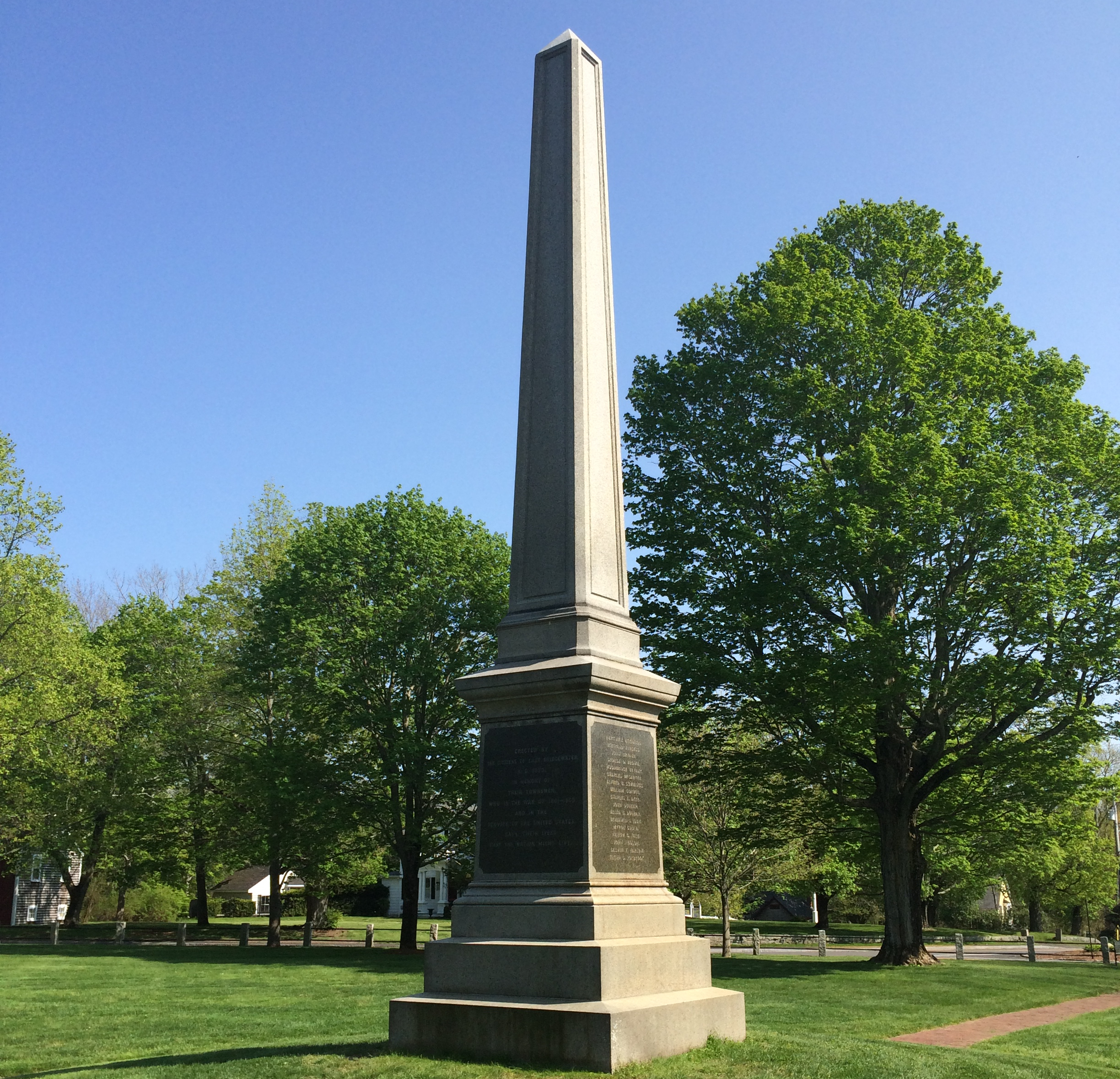
 Location: Town Common, 233 Central Street, East Bridgewater
Location: Town Common, 233 Central Street, East Bridgewater
Coordinates: 42°01’44.3″N 70°57’09.5″W
Date dedicated: September 17, 1874
Architect/sculptor/manufacturer: Unknown (possibly F. J. Fuller Co.)
Number of names: 47 men lost in the war
The Soldiers’ Aid Society of the town supplied the nucleus of funding to build East Bridgewater’s monument. The total cost was $4,000. The primary inscription reads, “Erected by the Citizens of East Bridgewater in Memory of their Townsmen, Who in the War of 1861-65, and in the Service of the United States, Gave their Lives that the Nation Might Live.” The manufacturer is not recorded, however it bears a strong resemblance to Hingham’s monument, manufactured by F. J. Fuller of Quincy–although East Bridgewater’s lacks some of the ornamentation of the Hingham monument. An article in the Boston Journal proclaimed it a “plain yet perfect thing.” The monument records the names of East Bridgewater’s 47 men lost in the war.
One of them, Sgt. Calvin “Frank” Harlow became well-known in East Bridgewater and beyond for his bravery during the Battle of Fort Stedman in 1865. Walt Whitman recounted his story in his book Specimen Days.
Harlow enlisted at age 19 with the 29th Massachusetts Infantry in 1861. Tall, slim, dark-haired and blue-eyed, he had worked as a nail maker before the war. Almost four years later, the opposing armies faced one another in stalemate during the long Siege of Petersburg, Virginia. Confederate forces made a desperate attempt to break the Union siege lines during a stealthy night attack on Fort Stedman–where Harlow and the 29th Massachusetts happened to be posted. Before the men knew what was happening, about 500 Confederates entered their fortification by a rear gate. Fierce hand-to-hand combat ensued.
According to Whitman, who apparently heard Harlow’s story from his comrades, Harlow was among the many in the regiment who were quickly surrounded by Confederates. Numerous men of the regiment surrendered. Sgt. Frank Harlow, ordered to lay down his weapon, answered, “Not while I live,” and called for his comrades to fight. He attempted to do so, but soon found himself confronted by the pistol of a Confederate officer. The officer insisted that Harlow yield. Harlow aimed his rifle. The Confederate officer fired and at the same time, Harlow managed to get off a shot. The two men fell dead, one of top of the other.
“When I think of such things,” Whitman wrote, “knowing them well, all the vast and complicated events of the war, on which history dwells and makes its volumes, fall aside, and for the moment at any rate I see nothing but young Calvin Harlowe’s figure in the night, disdaining to surrender.”[1]
[1] Walt Whitman, Specimen Days & Collect, (1883), p. 67



